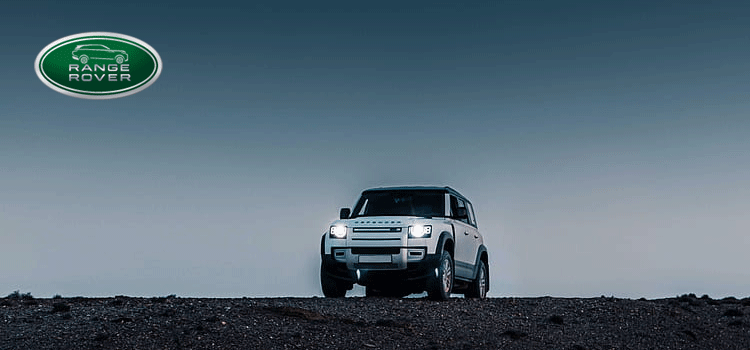
Introduction:
The Land Rover Defender Engine is an iconic vehicle famous for its toughness, reliability, and unparalleled off-road capabilities. Over the decades, the Land Rover Engine has evolved remarkably, and smoothly combining the latest technologies and adhering to stringent environmental standards while maintaining its legacy performance. From its inception to the latest versions, the Defender’s history is the ideal example of persistent innovation and engineering excellence. With every version, the Defender constantly push the boundaries, proving that its essence of adventure and robust capability is as enduring as ever. Experience the legacy of a true automotive legend where traditions meet innovations, and the essence of adventure lives on.
Simplicity and Durability:
The journey of the Land Rover Defender Engine started in 1948 with the launch of the original Land Rover Series. This legendary model was equipped with a 1.6-litre petrol engine, epitomizing simplicity and robustness, which generates 50 horsepower and 80 lb-ft of torque. Suitable for agricultural and utilitarian duties it was designed for. The focus was on reliability and ease of maintenance, with a simple design that could be repaired with the basic tools.
Enhanced Power and Performance:
During the 1960s and 70s, the Land Rover Defender Engine evolved into series II and III, and its engine options underwent a remarkable transformation. Its 2.25-litre petrol engine has a notable upgrade, producing 70 horsepower and 120 lb-ft of torque. This period also saw the introduction of diesel engines, starting with the 2.0-litre diesel units which offer better fuel efficiency and boost torque for off-road adventures. The Land Rover Defender Engine constantly emphasize durability, with cast iron blocks and a simple carburated system. These developments cemented the Defender’s reputation indomitable force, ready to tackle any terrain and withstand the test of time.
Turbocharging and Modernization:
The 1980s marked a significant shift for the Land Rover Defender, transforming from the classic Series III to the modern Defender 90 and 110 models. For the Defender’s engine lineup, this era was a game-changer introducing turbocharged diesel engines that would redefine its performance. The 2.5-liter 200Tdi emerged as a revolutionary advancement, generating 107 horsepower and 188 lb-ft of torque. This upgrade brought a remarkable increase in power and fuel efficiency, transforming the Defender into a more capable and reliable vehicle. In 1990, the Defender continued to evolve with the introduction of the 300Tdi engine. This new version has an intercooler and boosted turbocharging, and also generates 110 horsepower and 195 lb-ft of torque. These advancements solidified the Defender’s reputation for performance and durability, setting new benchmarks for off-road excellence.
Common Rail Diesel Technology:
In the 21st century, the Land Rover Defender Engine underwent an incredible evolution with the emergence of common rail diesel technology. The Td5 engine — a potent 2.5-liter, five-cylinder powerhouse, redefined the Defender’s lineup. With 122 horsepower and 221 lb-ft of torque, the Td5 delivered power more smoothly and boosted fuel efficiency. This period also marked the beginning of stringent emission regulations, leading to the development of cleaner and more efficient engine designs.
Advanced Engineering and Performance:
In the present time, the Land Rover Defender Engine has seen a remarkable transformation with the introduction of the all-new Defender models. Advanced engines are a prime example of smart engineering and performance. The 2.0-litre turbocharged petrol and diesel engine offers fusion power and efficiency. The P300 petrol engine generates 296 horsepower and 295 lb-ft of torque, while the D20 diesel engine delivers 237 horsepower and 317 lb-ft of torque. Also, the 3.0-litre six-cylinder Ingenium engines with mild hybrid technology give even greater performance and efficiency.
Conclusion:
The evolution of the Land Rover Defender Engine is the prime example of the progress in automotive technology, showing the Land Rover’s commitment to innovation while preserving the Defender’s famous status. From the modest 1.6-litre engine to the Series I to the latest Ingenium engines of today, the Land Rover Defender has demonstrated incredible adaptability and resilience. As the Defender continues to evolve, the Land Rover Defender Engine remains vital to its timeless charm, representing the perfect blend of tradition and modernity.
FAQs
What was the first engine used in the Land Rover Defender?
The first engine was a 1.6-litre petrol engine producing 50 horsepower.
When did the Land Rover Defender start using turbocharged engines?
Turbocharged engines were introduced in the 1980s with the 2.5-litre 200Tdi.
What is the power output of the Td5 engine in the Land Rover Defender?
The Td5 engine generates 122 horsepower and 221 lb-ft of torque.
What are the specifications of the latest 2.0-litre engines in the Defender?
The P300 petrol engine has 296 horsepower, while the D20 diesel engine has 237 horsepower.
What technology do the latest 3.0-litre engines in the Defender feature?
They feature Ingenium engines with mild hybrid technology.


